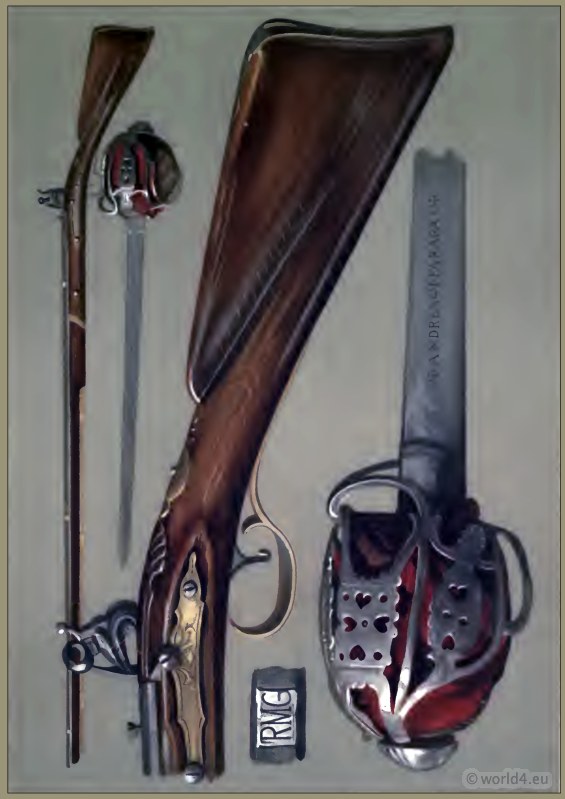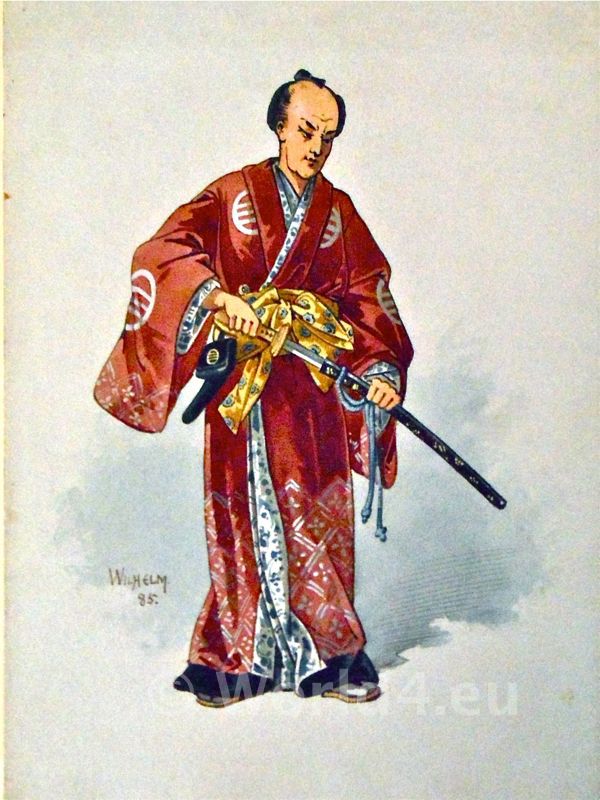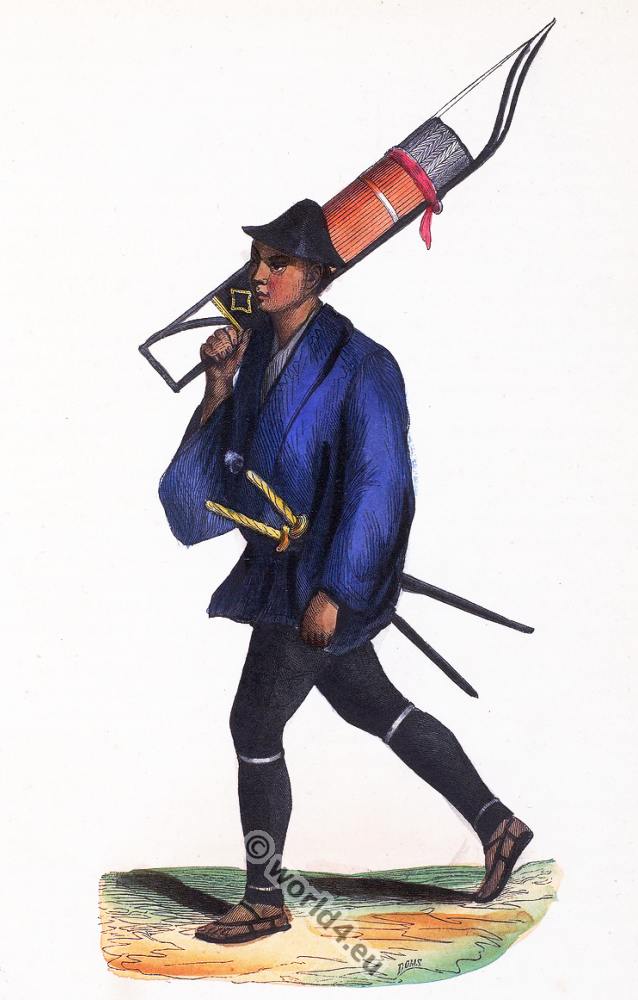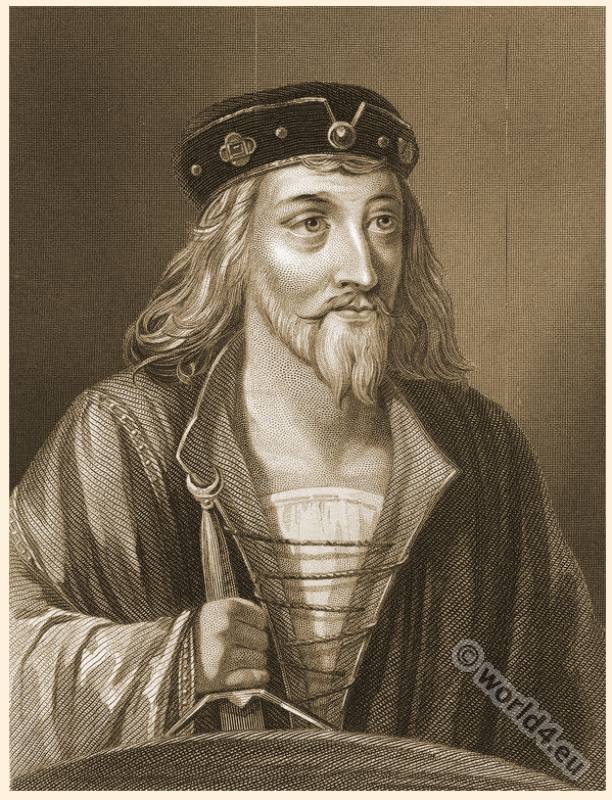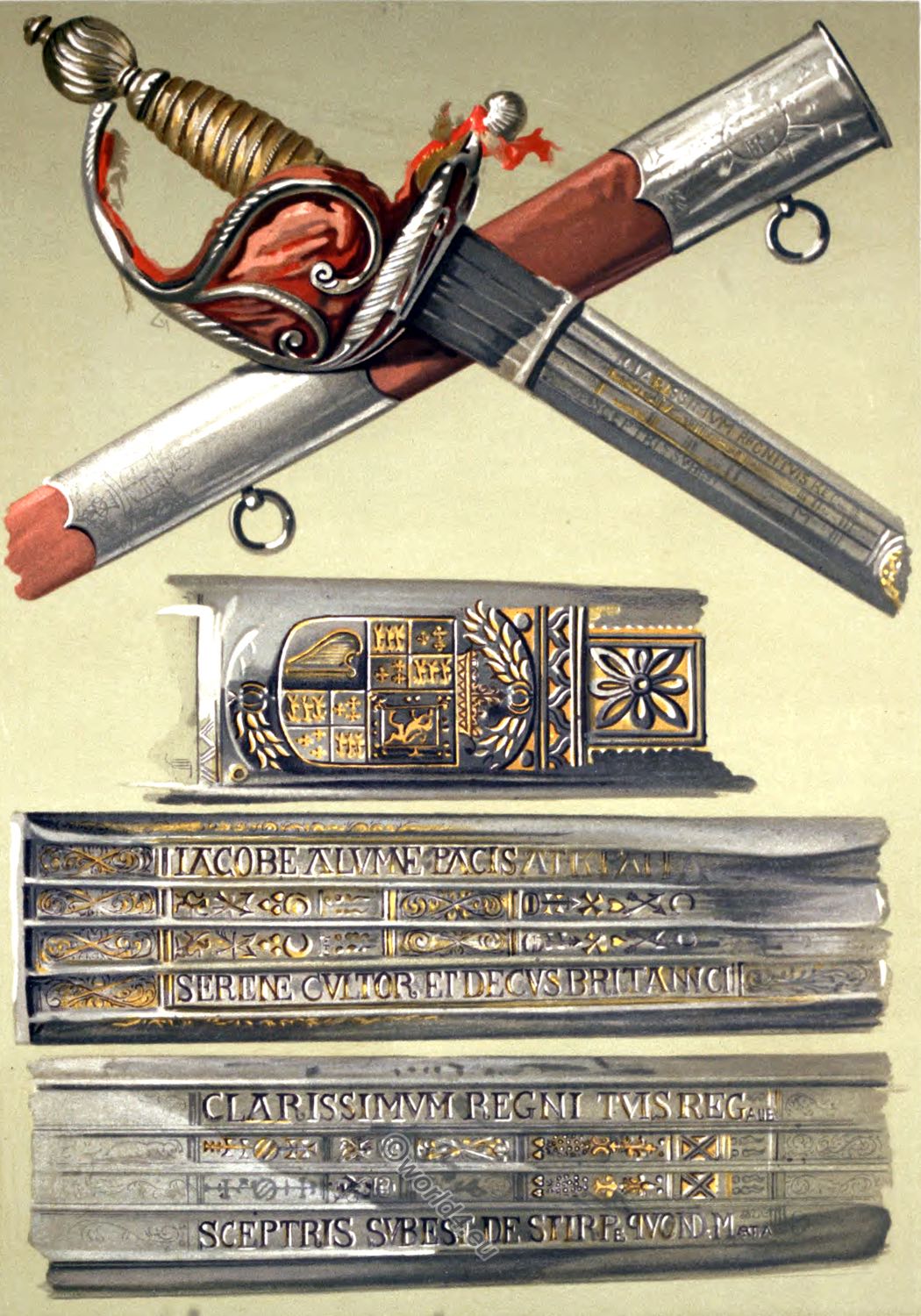Rob Roy`s gun and sword. Broadsword, with Andrea Ferrara blade.
“And thus among the rocks he lived,
Through summer’s heat and winter’s snow:
The eagle he was lord above,
And Rob was lord below.” WORDSWORTH.
ROB ROY’S gun is an old flint-lock gun with long barrel, inlaid with three silver bands and silver plate bearing initials R. M. C. (for Robert Macgregor Campbell). This is the same gun with which his son, Robin Oig, shot M’Laren of Invernenty. The barrel is octagonal. The stock has a brass plate with an engraved design and another on the top with a shell pattern. The trigger guard is also of brass. The barrel is 4 feet in length, and the stock 17 inches.
Rob Roy’s sword is a fine “old Highland Broadsword, with Andrea Ferrara blade (Andrew Ferrara) and basket hilt.” It is 37 inches in length, the blade being 3 2 1/2 by 1 1/2 inches. Enlargements of hilt and stock drawn half real size. On each side the blade has the name Andrea Ferrara with three orbs and crosses. The hilt is of scroll work with flat plates perforated with round and heartshaped holes. The grip is covered with spirally carved wood, and the pommel is a flattened knob ornamented with dots and lines.
Rob Roy’s name is so familiar as a hero of romance, and the real facts of his history are so intermingled with those of a legendary nature, that it is perhaps difficult to disentangle the two, and to picture to ourselves the man as he really appeared to his contemporaries. Robert Macgregor, commonly styled Rob Roy, was the younger son of Donald Macgregor of Glengyle. His mother was a Campbell of Glenfalloch, and Robert afterwards adopted her name when his own had been abolished by Act of Parliament. Robert’s own designation was of Inversnaid, but later in life he also acquired some kind of right to the property of Craig Royston, lying on the east side of Loch Lomond. To this, possibly, as well as to his colouring, he owed his sobriquet of Rob Roy. The exact date of his birth, and even of his death, is uncertain; but it is probable that he was born about the middle of the seventeenth century, as he is said to have died about 1733, an aged man.
To follow Robert through his chequered career from his first reputed appearance among the scenes of war and plunder following the Revolution, through his more peaceful days of cattle-dealing, ending in the wild days of his “cateran” life and political enterprise, would be too long a task, but the following descriptions taken from Sir Walter’s historical introduction to the novel of Rob Roy, may help us to form a just idea of this remarkable personage:
“His stature was not of the tallest, but his person was uncommonly strong and compact. The greatest peculiarities of his frame were the breadth of his shoulders, and the great and almost disproportionate length of his arms so remarkable indeed that it was said he could, without stooping, tie the garters of his Highland hose, which are placed two inches below the knee. His countenance was open, manly, stern at periods of danger, but frank and cheerful in his hours of festivity. His hair was dark red, thick and frizzled, and curled short round the face. His fashion of dress showed, of course, the knees and upper part of the leg, which was described to me as resembling that of a Highland bull, hirsute with red hair, and evincing muscular strength similar to that animal.
To these personal qualifications must be added a masterly use of the Highland sword, in which his length of arm gave him great advantage, and a perfect and intimate knowledge of all the recesses of the wild country in which he harboured, and the character of the various individuals, whether friends or hostile, with whom he might come in contact. His mental qualities seem to have been less adapted to the circumstances in which he was placed. Though the descendant of the bloodthirsty Ciar Mhor, he inherited none of his ancestor’s ferocity. On the contrary, Rob Roy avoided every appearance of cruelty, and it is not averred that he was ever the means of unnecessary bloodshed, or the actor in any deed which could lead the way to it. His schemes of plunder were contrived and executed with equal boldness and sagacity, and were almost universally successful, from the skill with which they were laid, and the secrecy and rapidity with which they were executed.
Like Robin Hood of England he was a kind and gentle robber, and, while he took from the rich, was liberal in relieving the poor. This might in part be policy; but the universal tradition of the country speaks it to have arisen from a better motive. “All whom I have conversed with, and I have in my youth seen some who knew Rob Roy personally, give him the character of a benevolent and humane man ‘in his way.’ This singular man died in bed in his own house in the parish of Balquhidder. He was buried in the churchyard of the same parish, where his tombstone is only distinguished by a rude attempt at the figure of a broadsword.”
Source: Abbotsford; the personal relics and antiquarian treasures of Sir Walter Scott. Illustrated by William Gibb. By Maxwell-Scott, Mary Monica. London A. and C. Black 1893.

